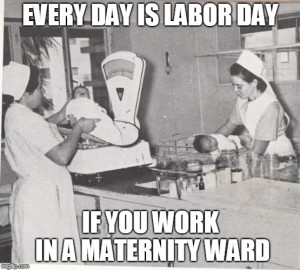Does LC 4061(i) Have Cooties?
Ok dear readers, we made it to another Friday. Now, as a reward for keeping your composure this whole week, how about a blog post about a recent panel decision?
So way back when in 2013 we got SB-863 which reformed workers’ compensation and, among a whole bunch of other stuff, gave us Labor Code section 4061(i), which, presumably, should prevent having cases set for extent of PD or work restrictions until there’s been a med-legal and a treating physician evaluation.
Unfortunately (or fortunately, depending on which side of the argument you are on) 4061(i) will typically get you an eye-roll at best, so I wouldn’t hold out hope for an OTOC or continuance in most cases. So let’s look at the recent panel decision of Gomez v. Pagliro Construction, Inc. Defendant objected to setting all issues for trial as it sought an additional panel in internal medicine. It also raised an objection under 4061(i). When the WCJ denied the additional panel request and set all issues for trial, the WCAB got involved to address defendant’s petition for removal.
So why get an additional panel in internal medicine? Applicant reported chest pains following his 10-foot fall and the orthopedic QME advised that such complaints, and the related issue of causation, was outside of the good doctor’s expertise. He suggested referring the issue to a cardiovascular specialist.
The WCAB agreed that an additional panel was warranted, as solely having a PTP comment on the issue without the opportunity for a med-legal would prevent defendant “from conducting necessary medical-legal discovery to determine compensability for the alleged injury to the chest and circulatory system.” The panel decision went on “neither party is obligated to accept the findings of the treating physician regarding causation. The Labor Code expressly provides a process for either party to object to a medical determination by a treating physician and request a medical-legal evaluation from a panel QME to address the dispute [citations].”
So what about the 4061(i) objection? Does the WCAB give us some guidance on how that applies? Nope! Because defendant is entitled to an additional panel, the 4061(i) objection is rendered moot.
4061(i) is supposed to afford parties an opportunity to have both a med-legal and a treating physician comment on whole person impairment and work restrictions before the matter is submitted. We know from the case of Hernandez v. Costco Wholesale that if 4061(i) is not raised in an objection to a DOR, it may very well be waived. From Bustos v. WCAB we know that merely seeing a PTP and a med-legal is not enough – each of them must address WPI/PD.
For whatever reason, this section has not been getting a lot of attention from the panels and thus we are not left with very much in terms of guidance. Thus, dear readers, the title of today’s blog post.
What has your experience been, dear readers? Your humble blogger is eager to read all about it. Have a great weekend!


